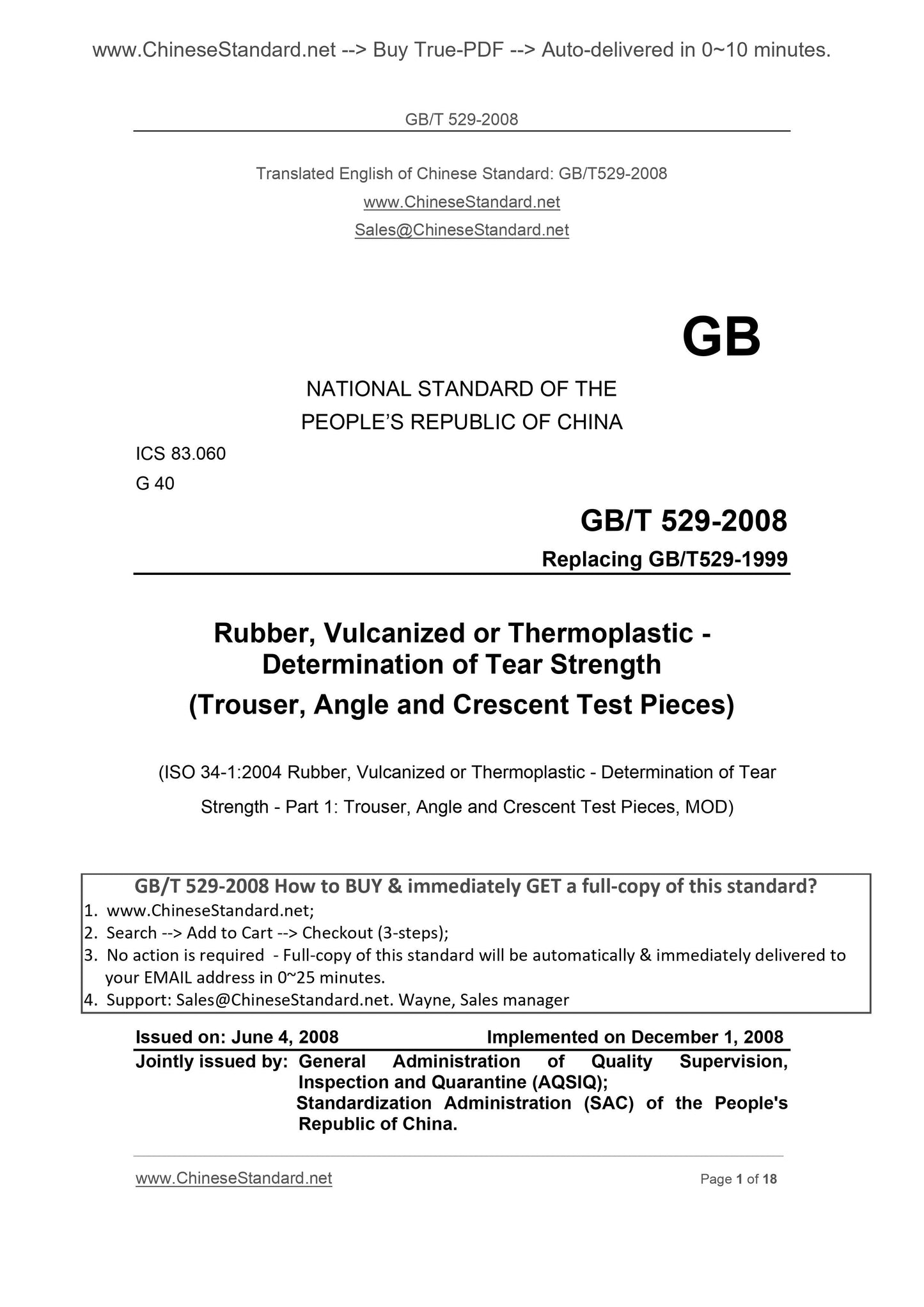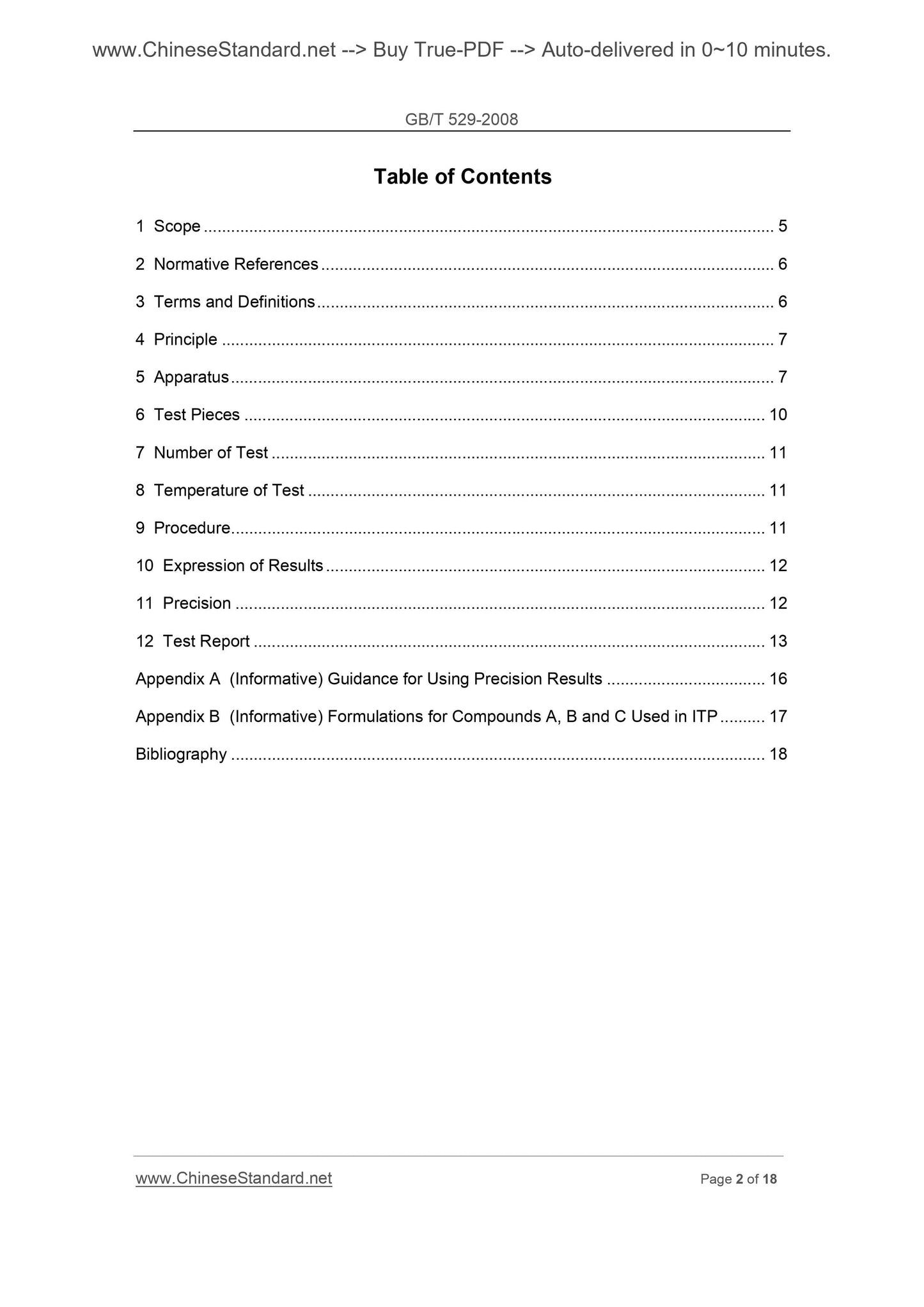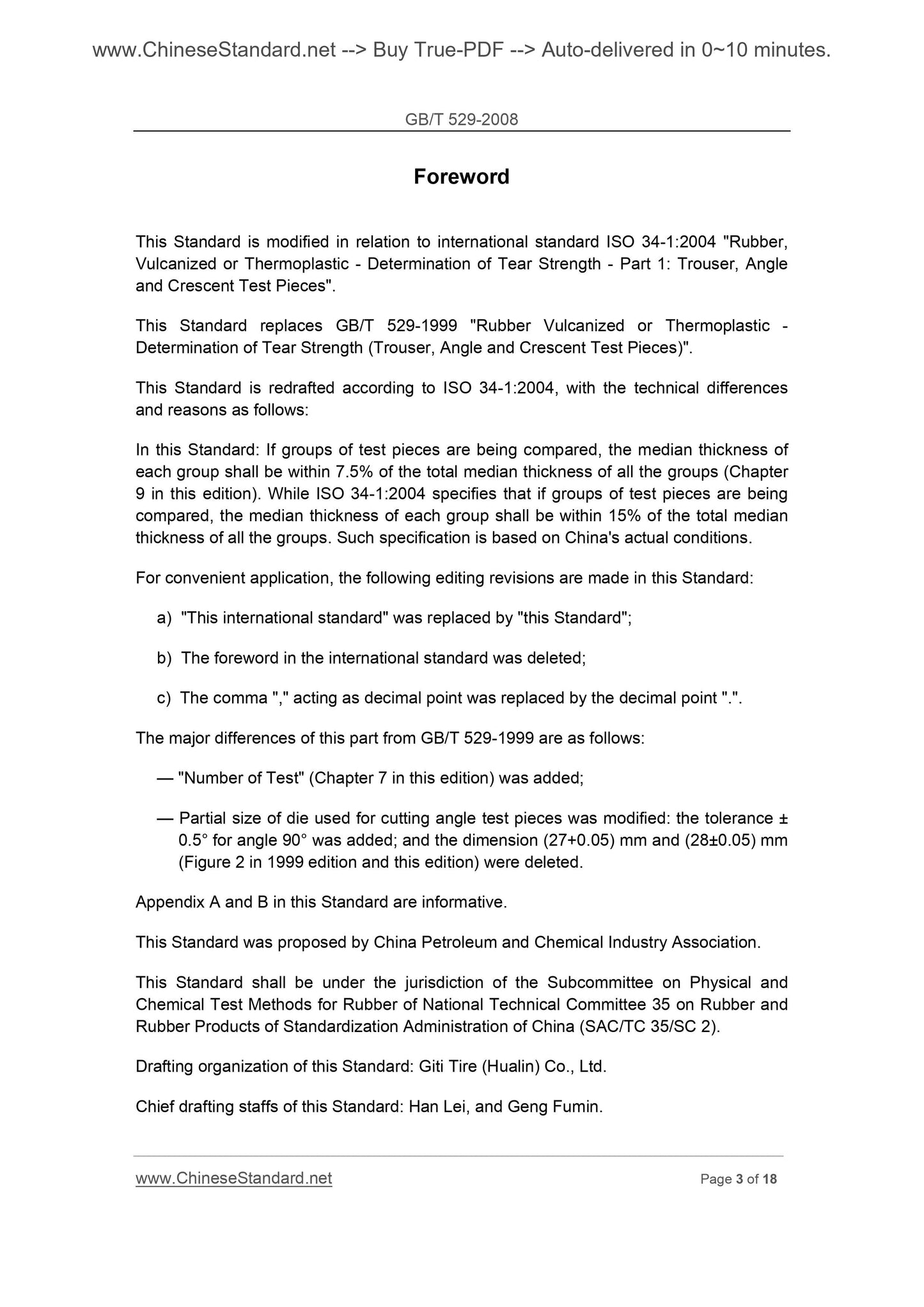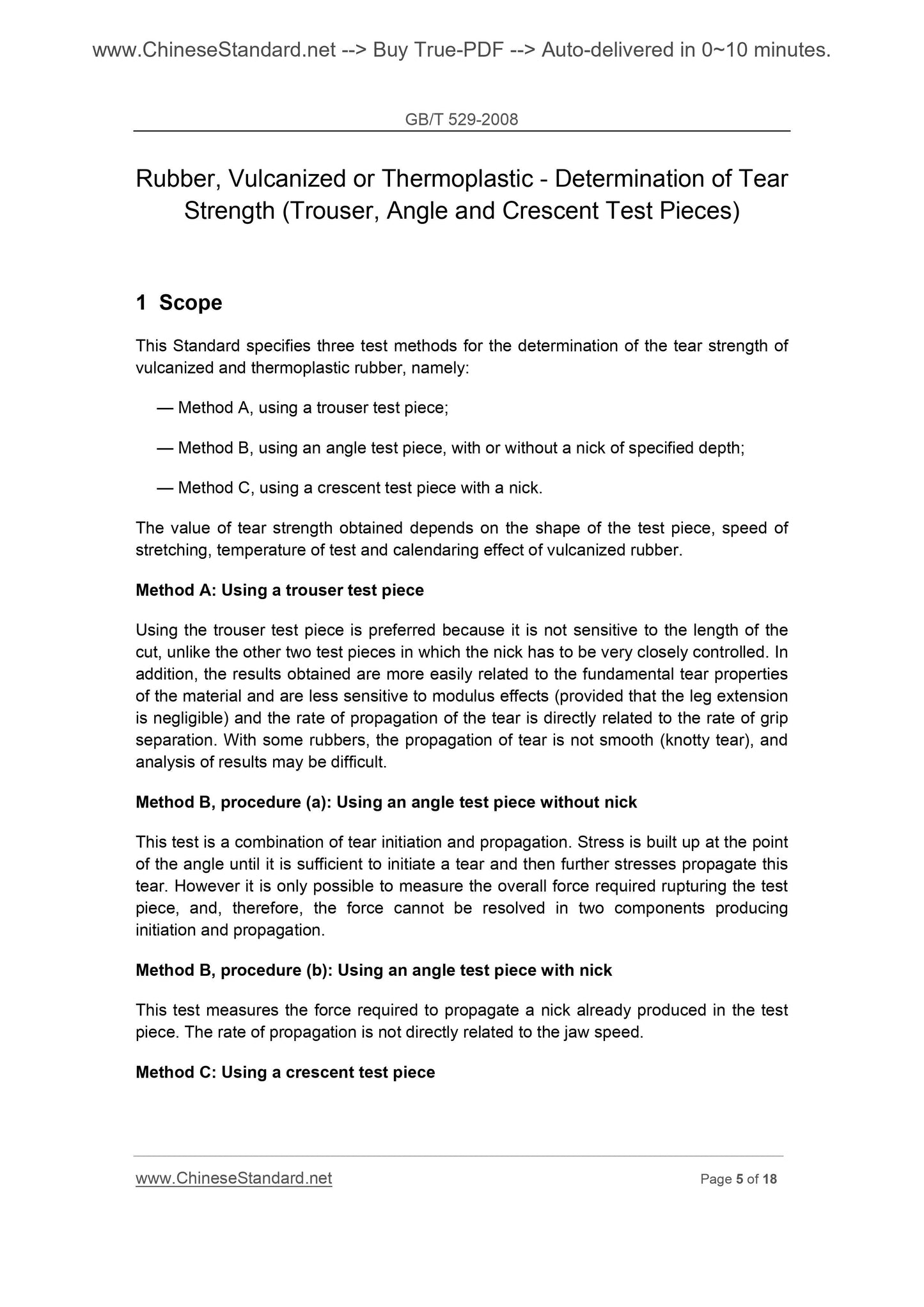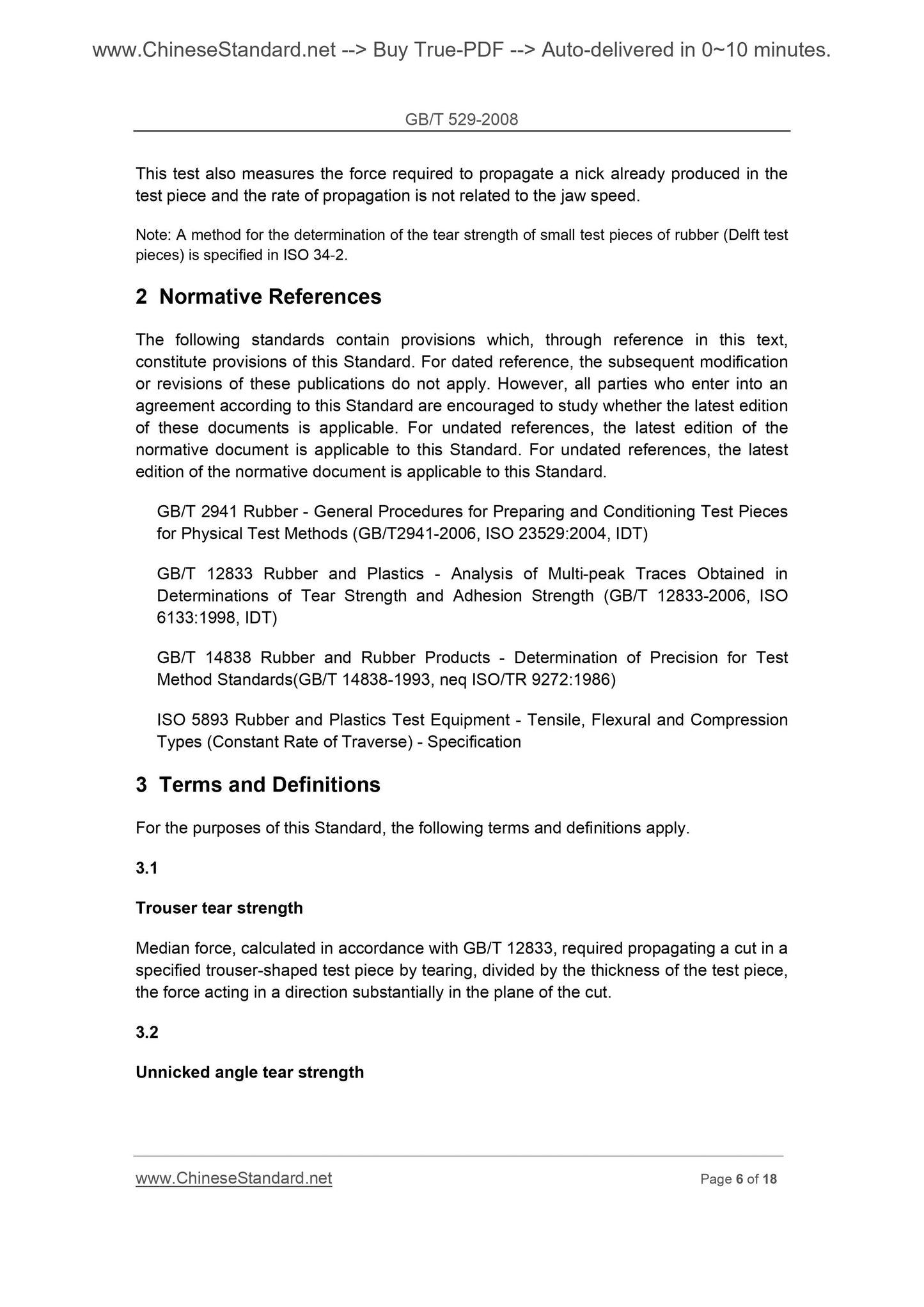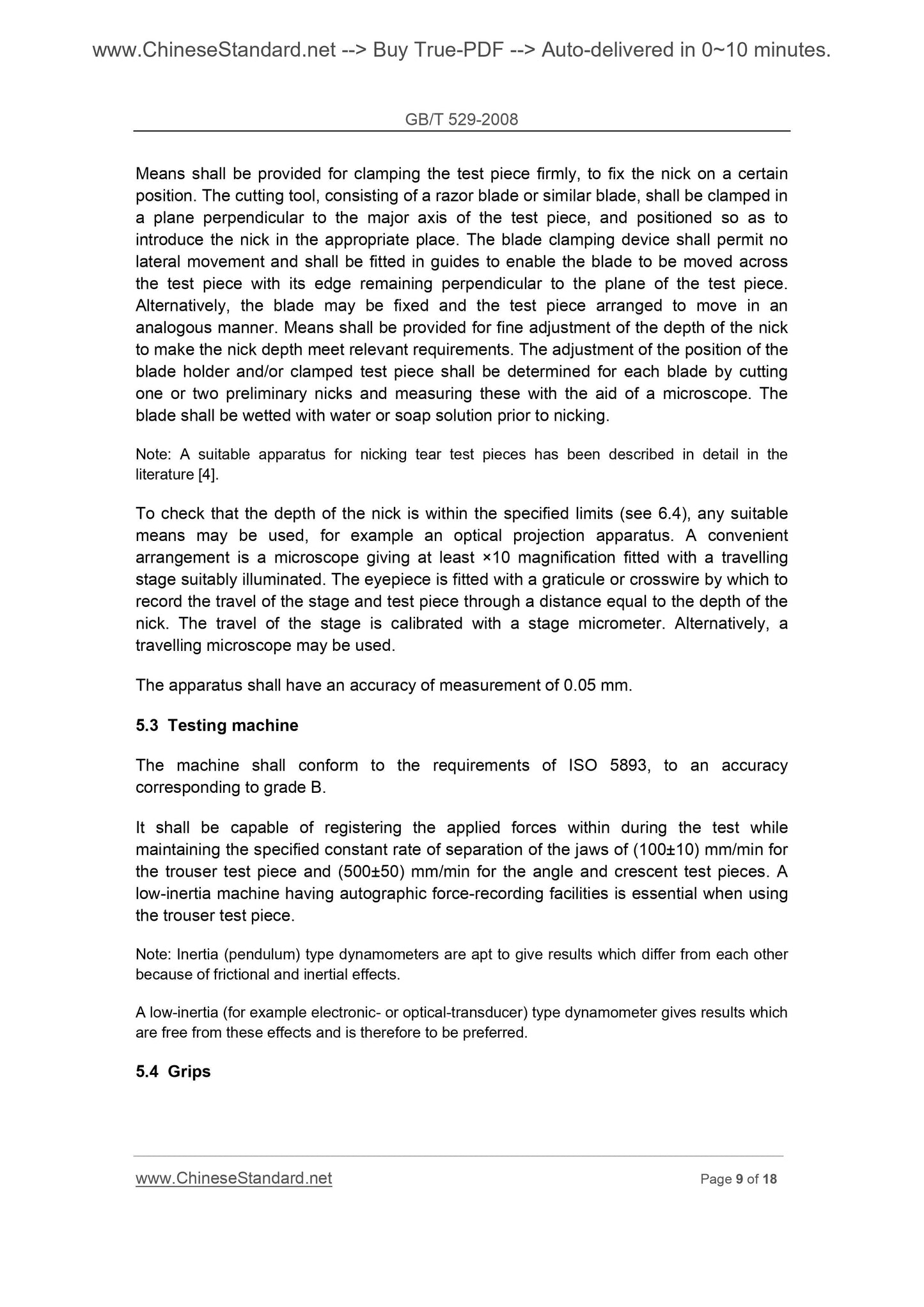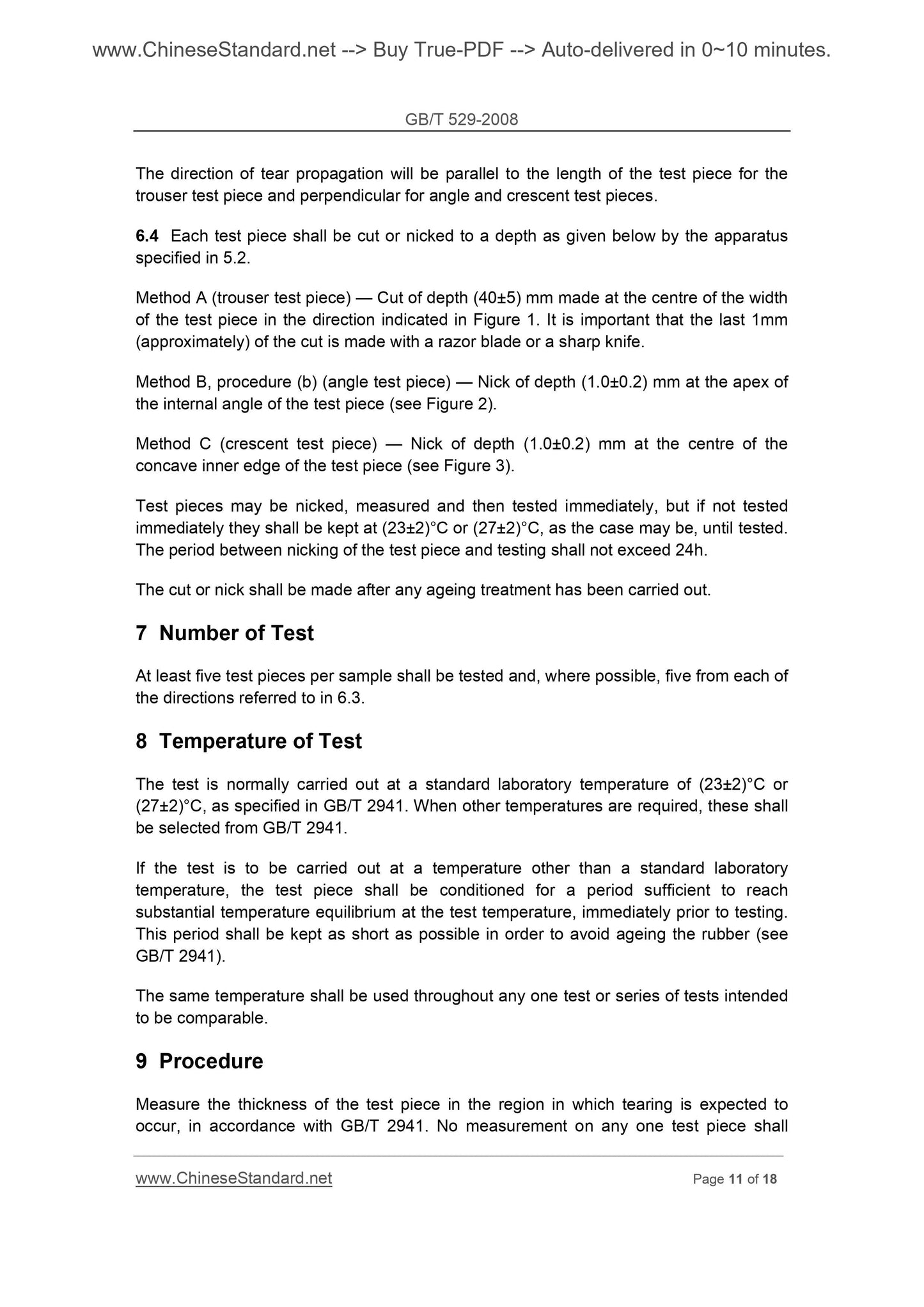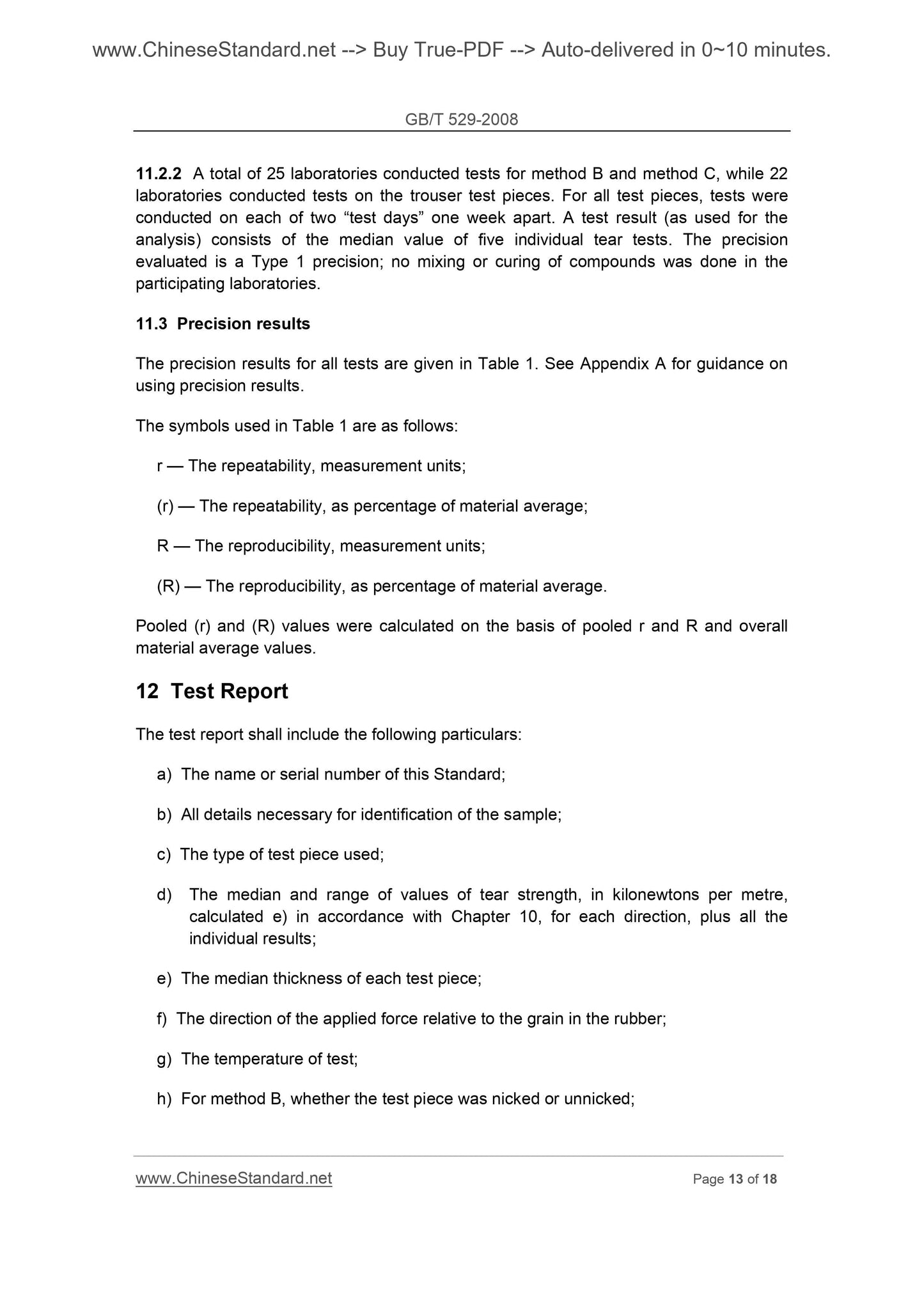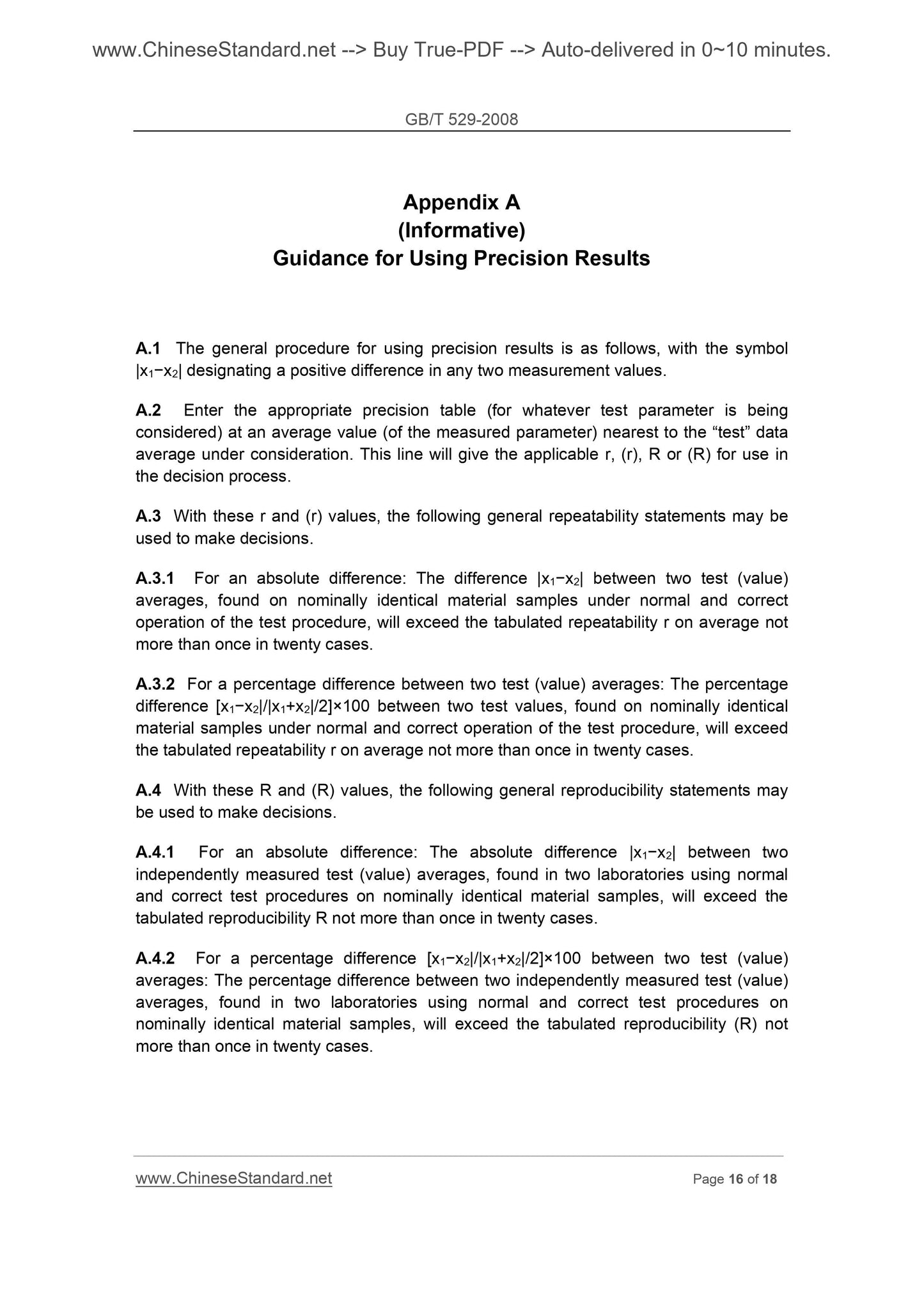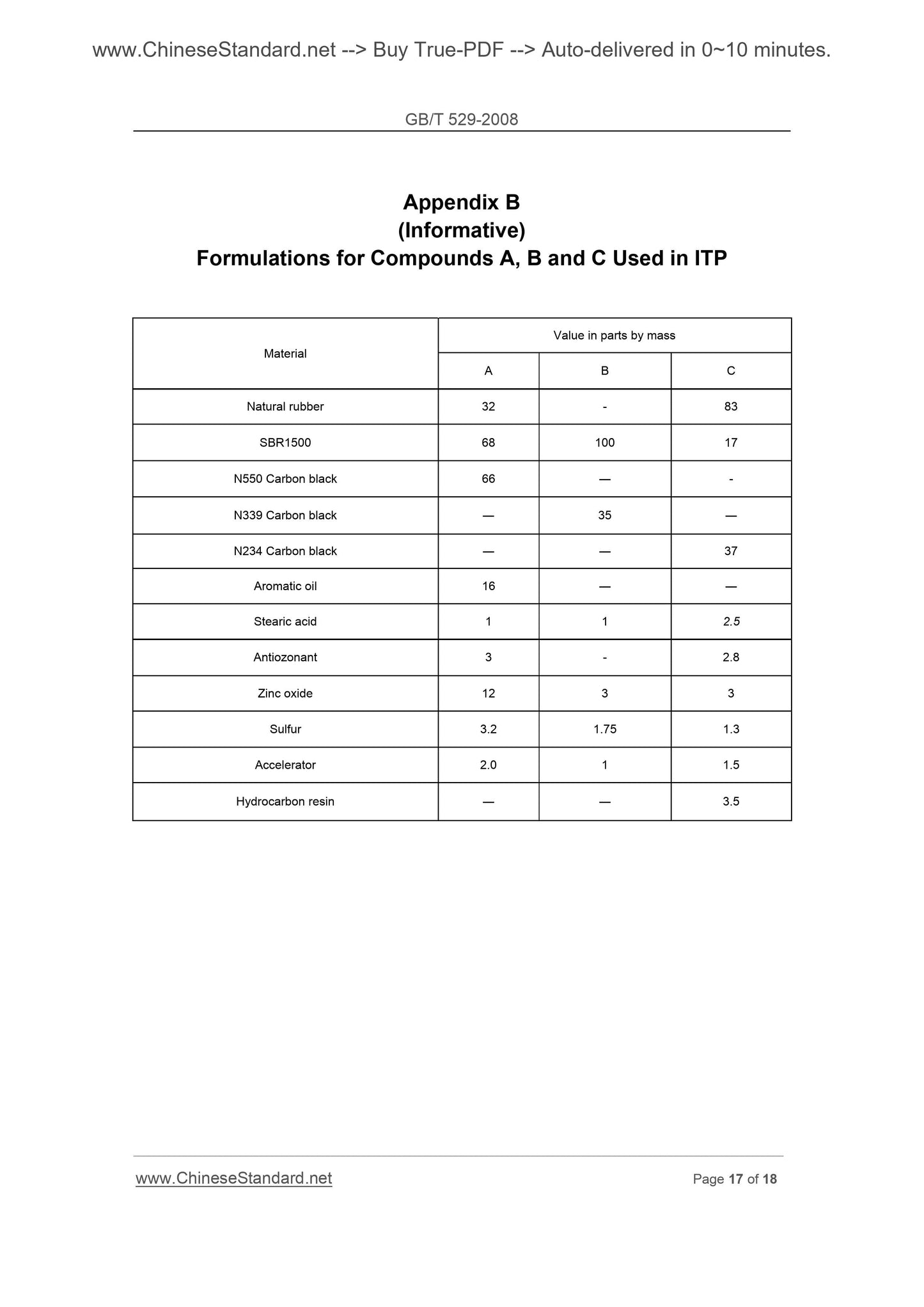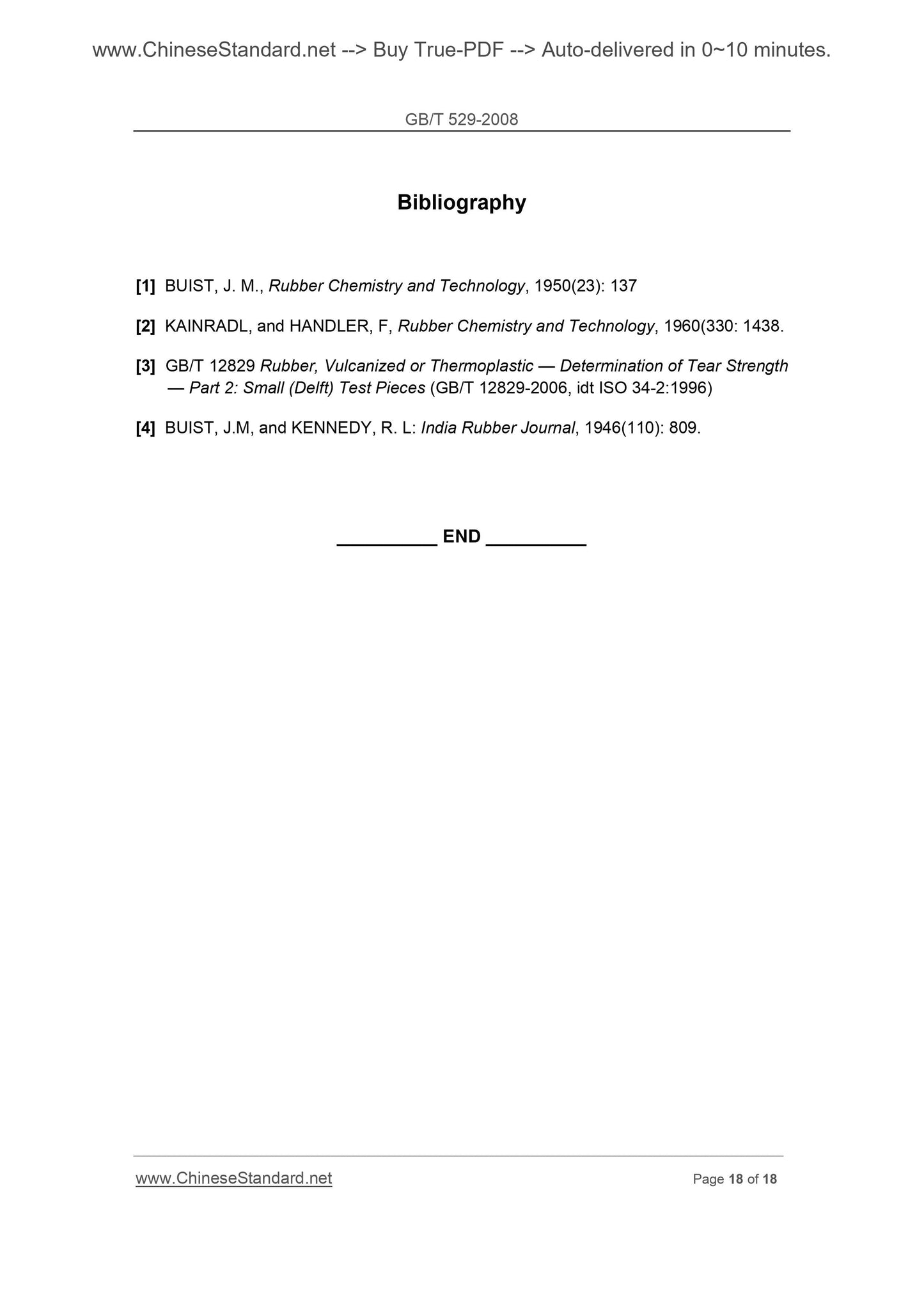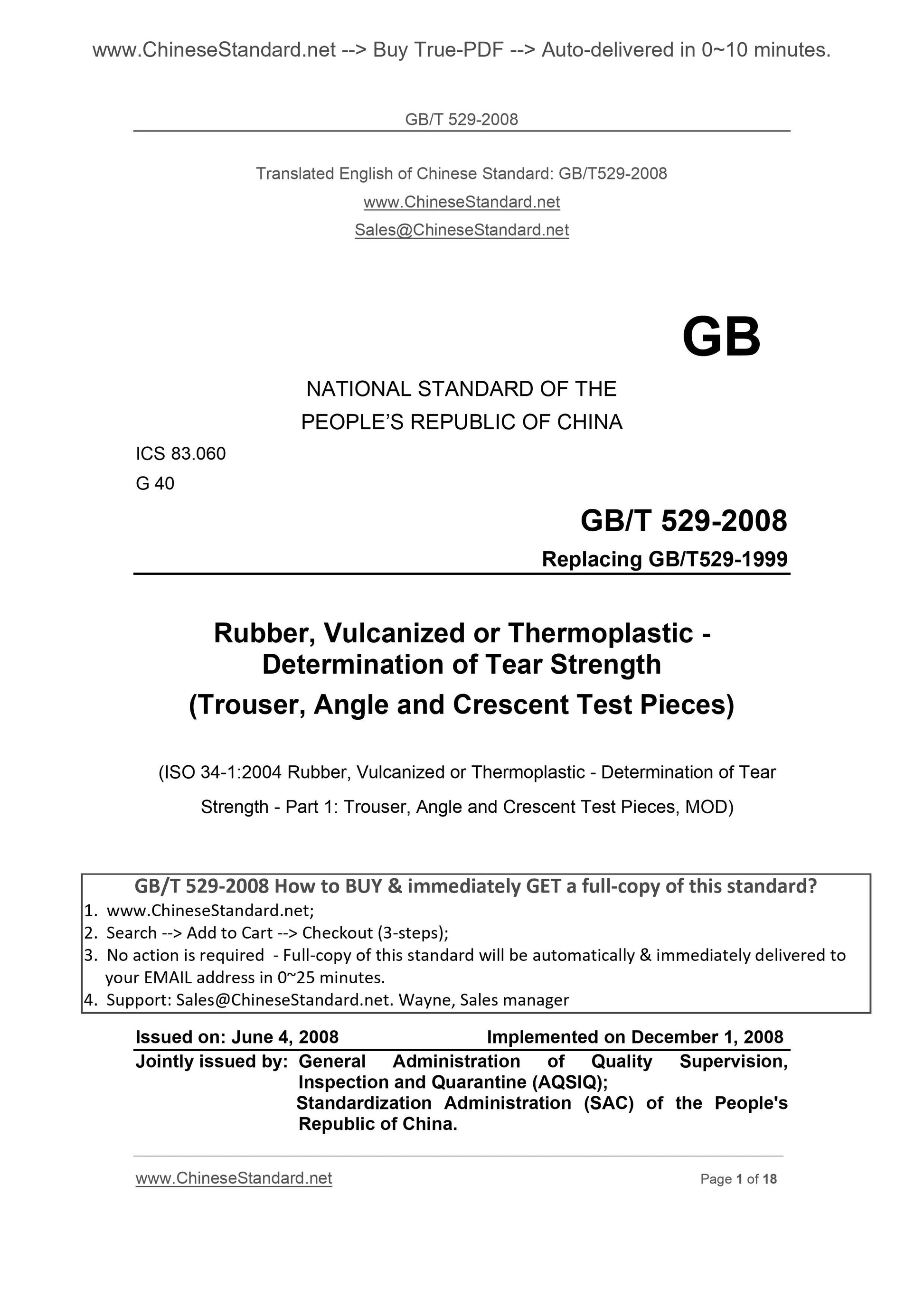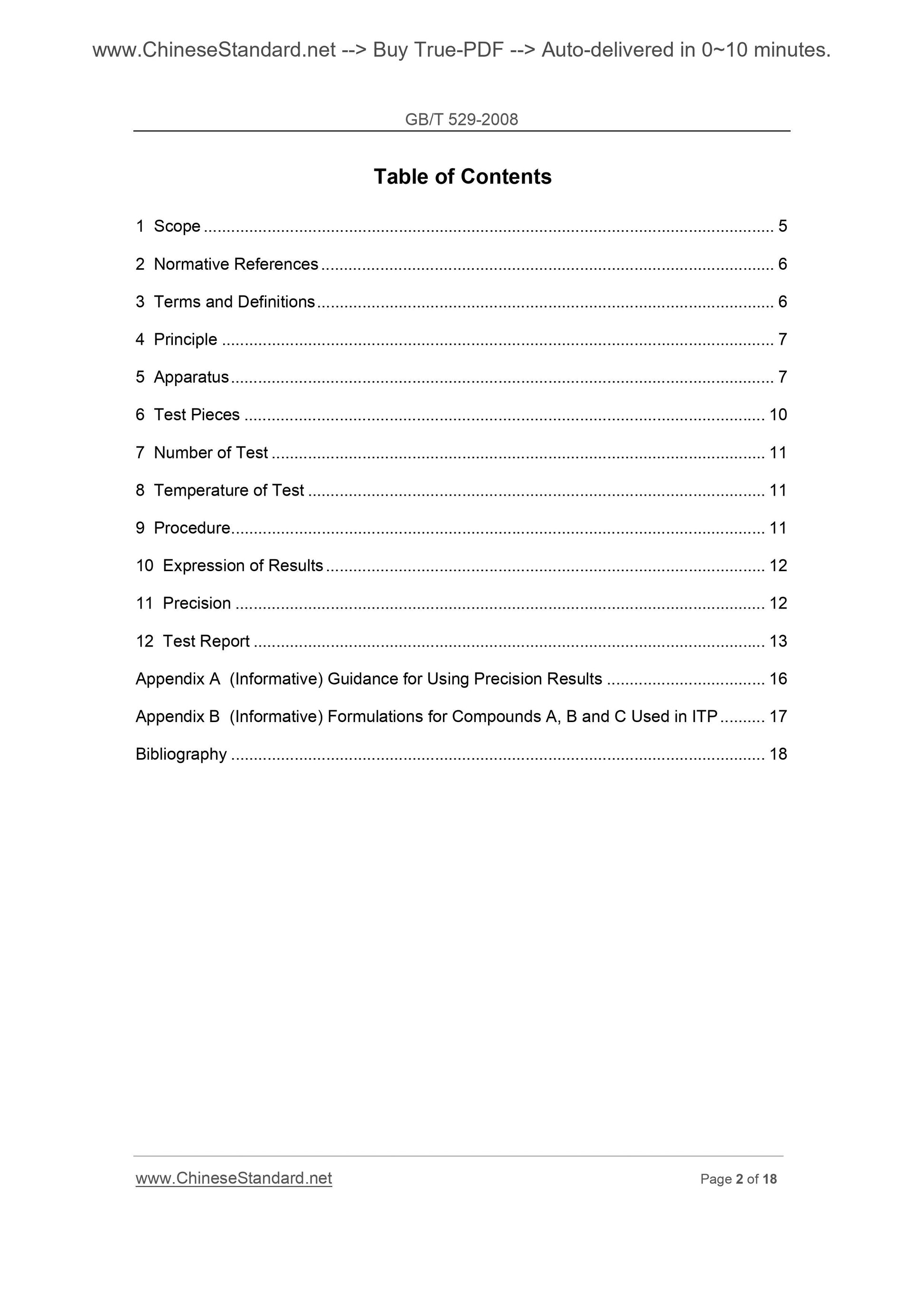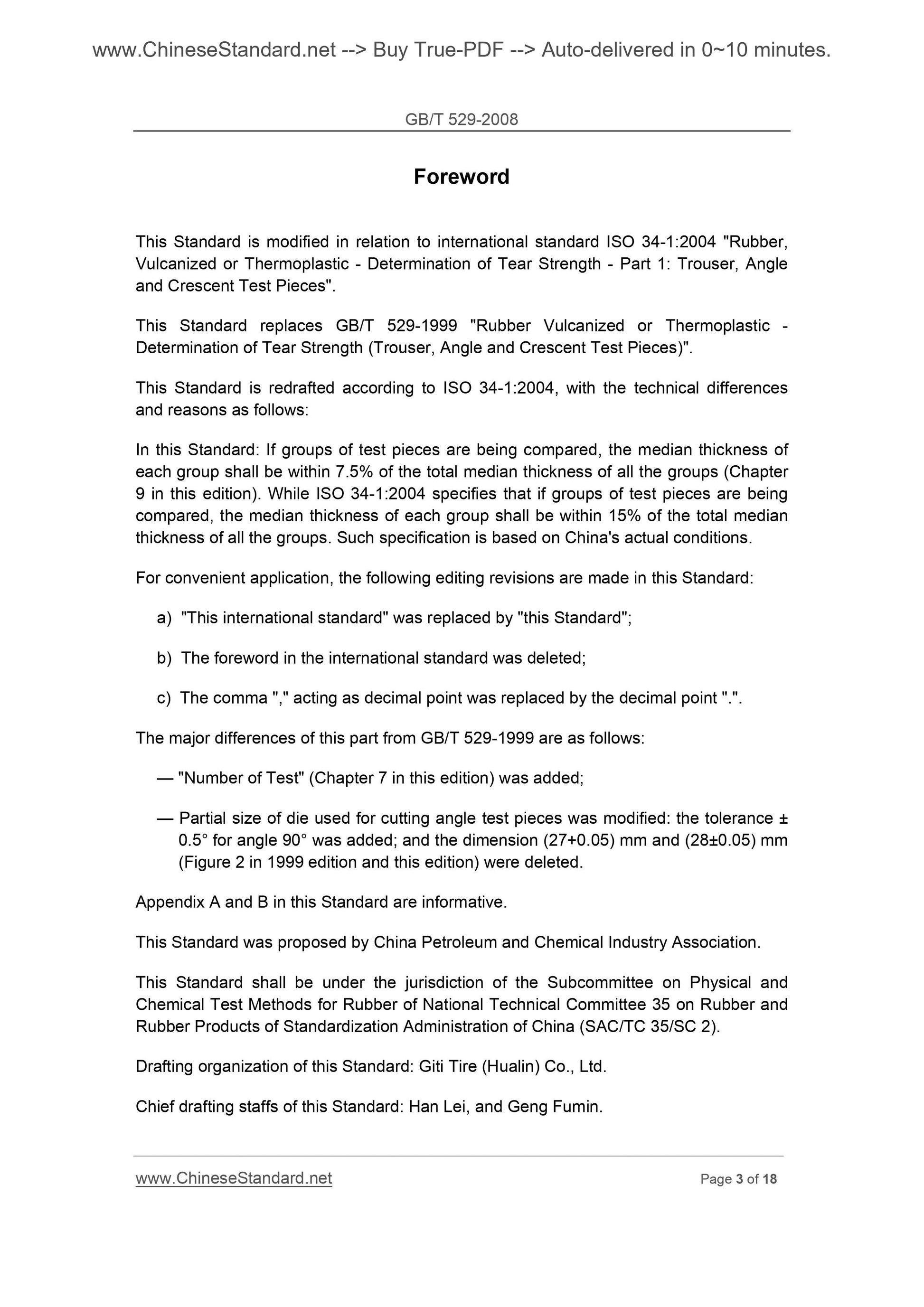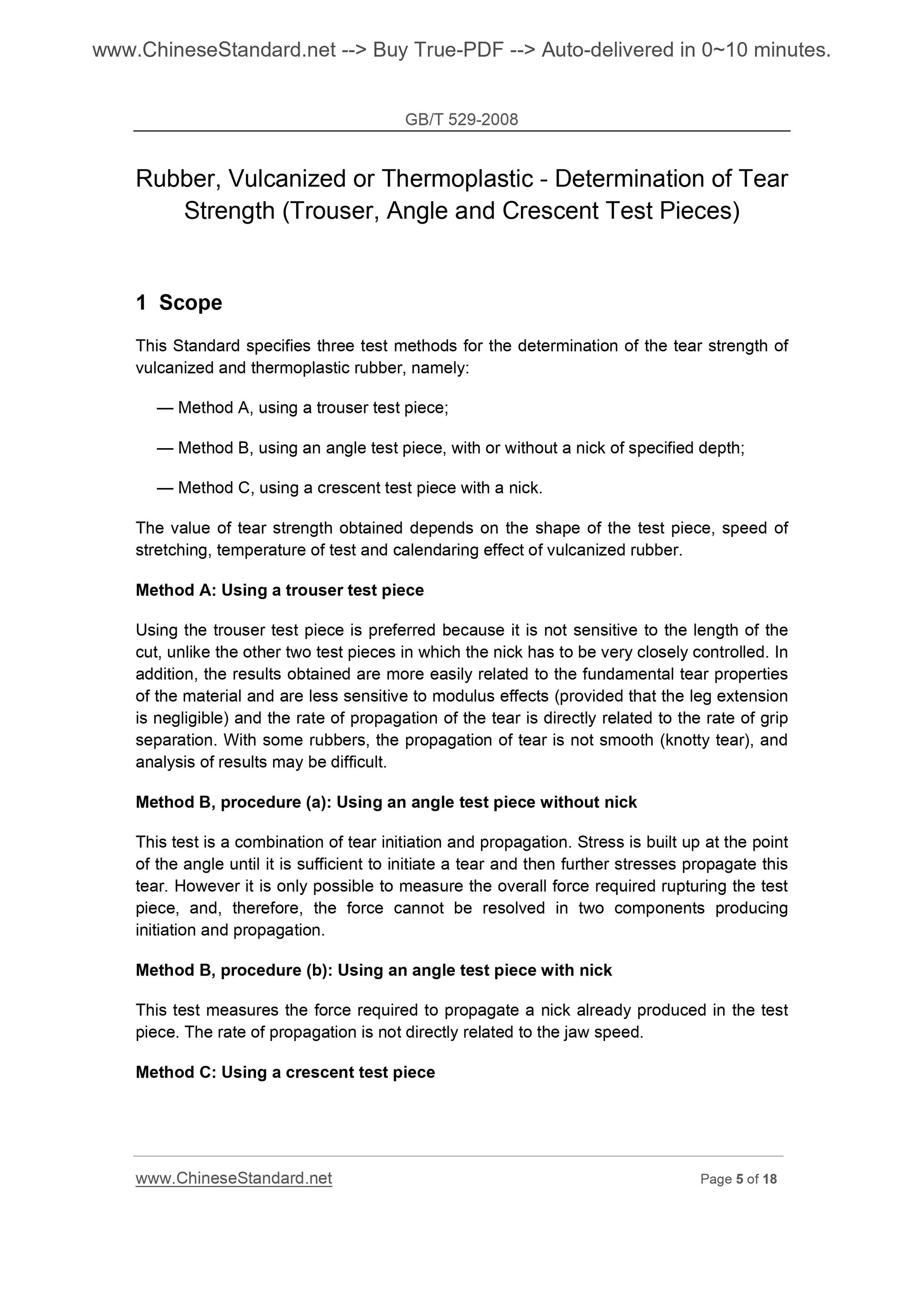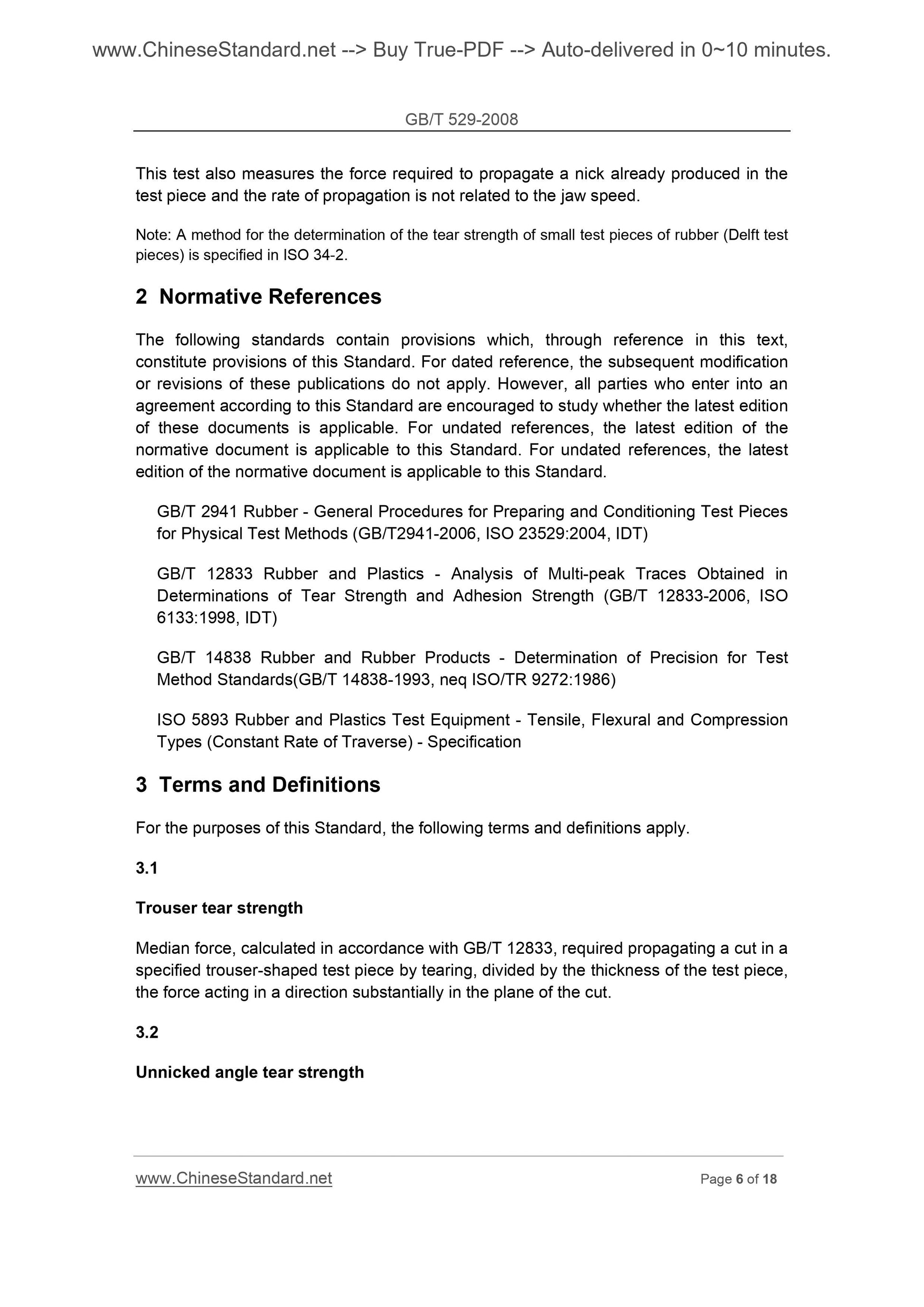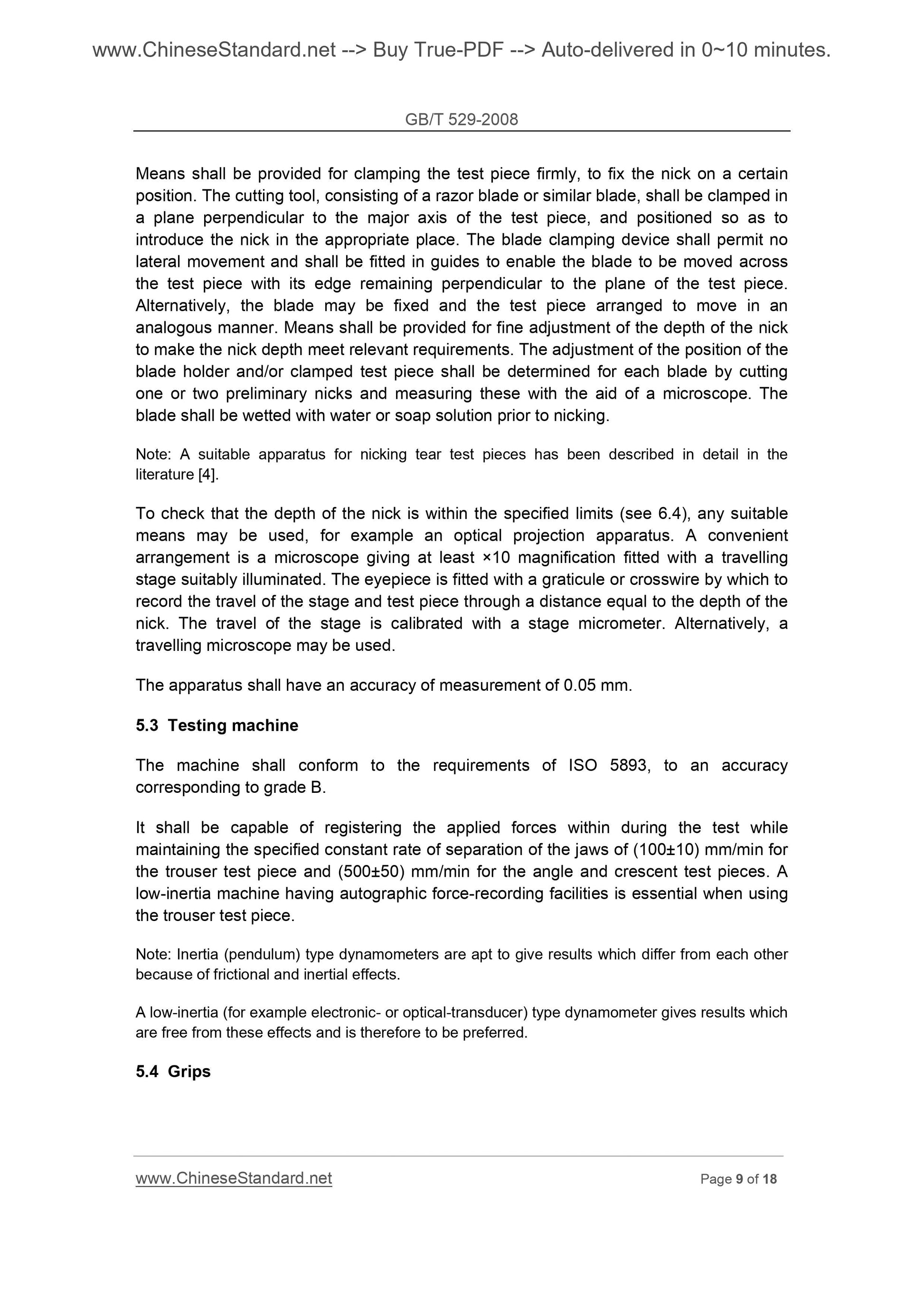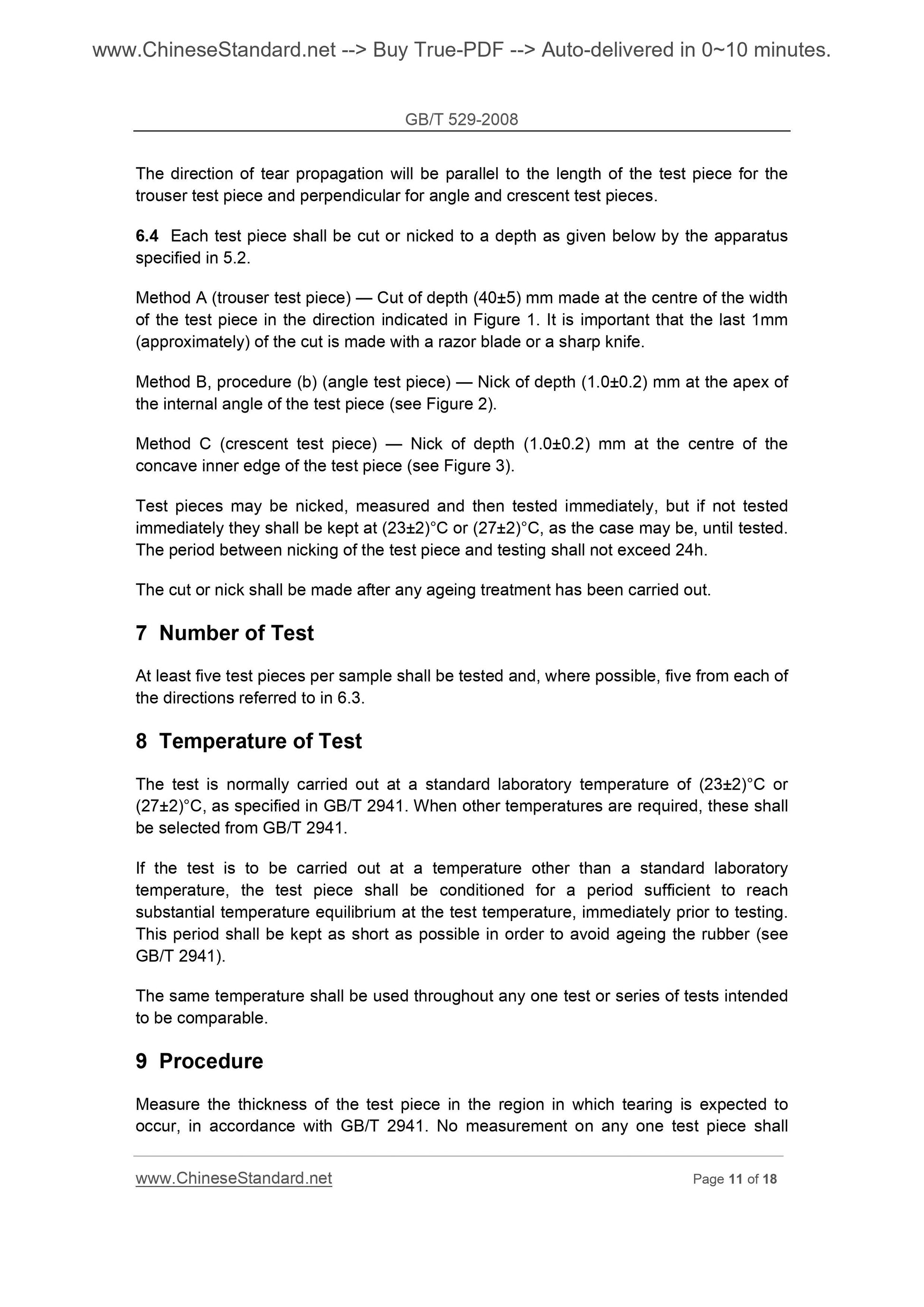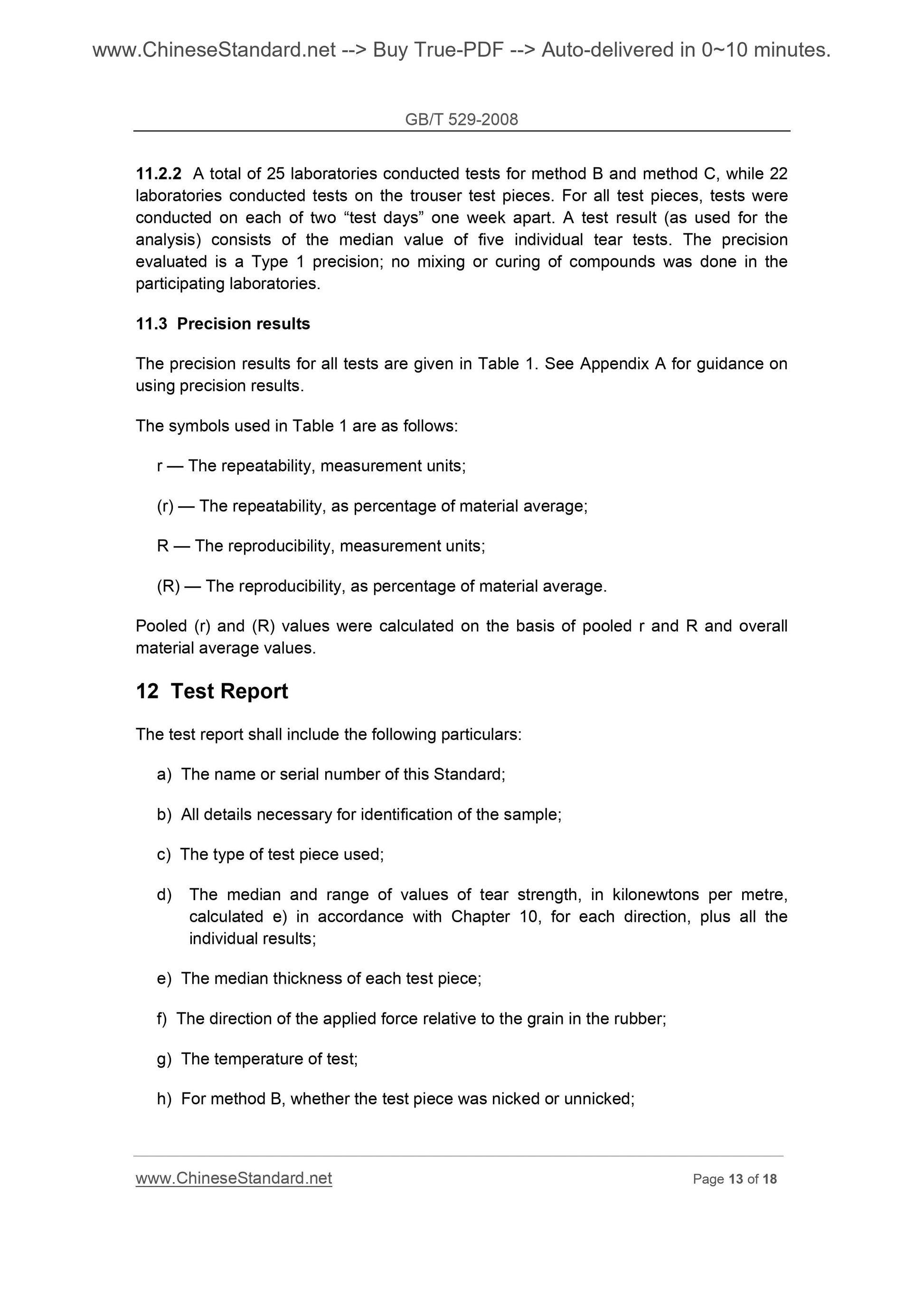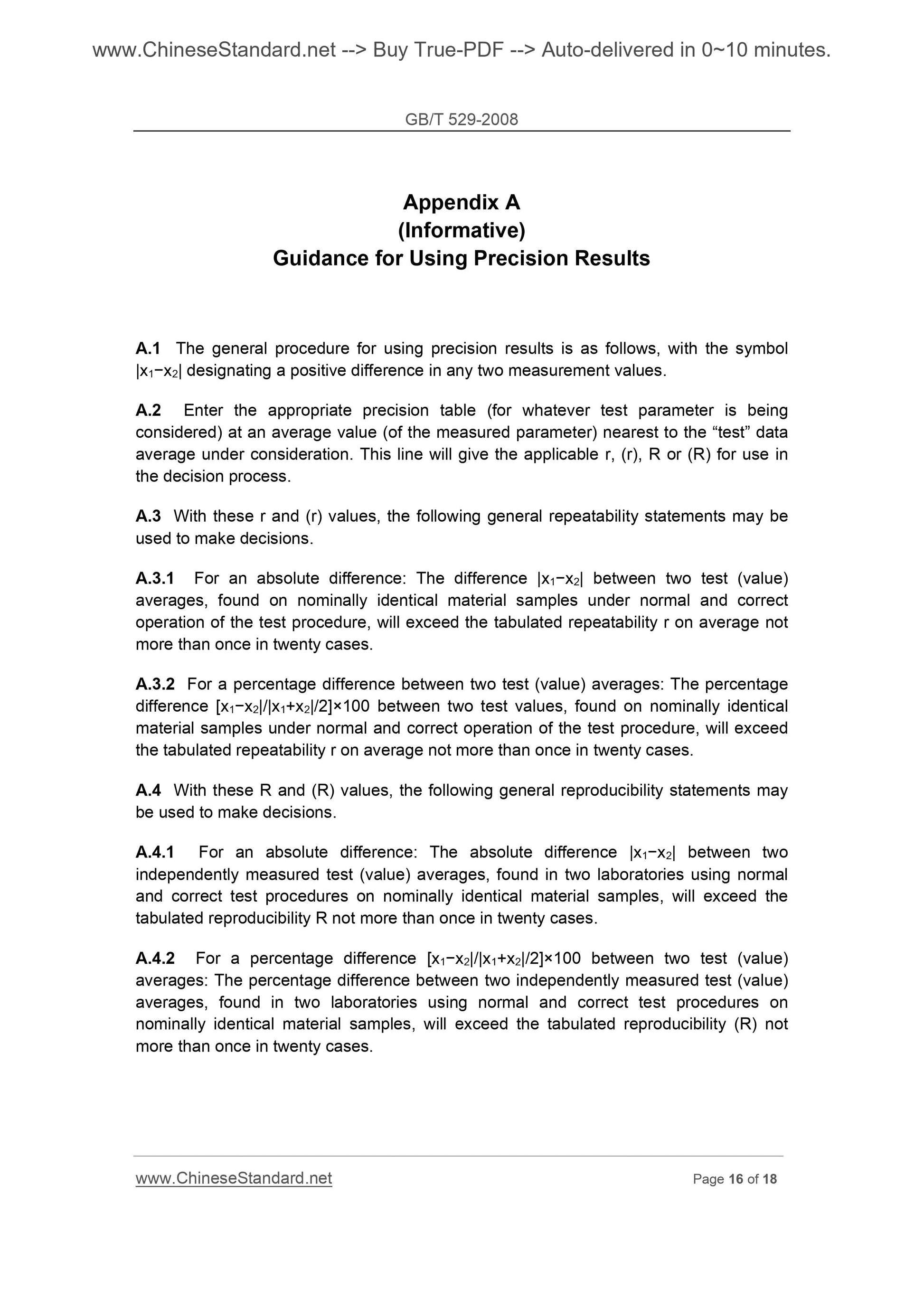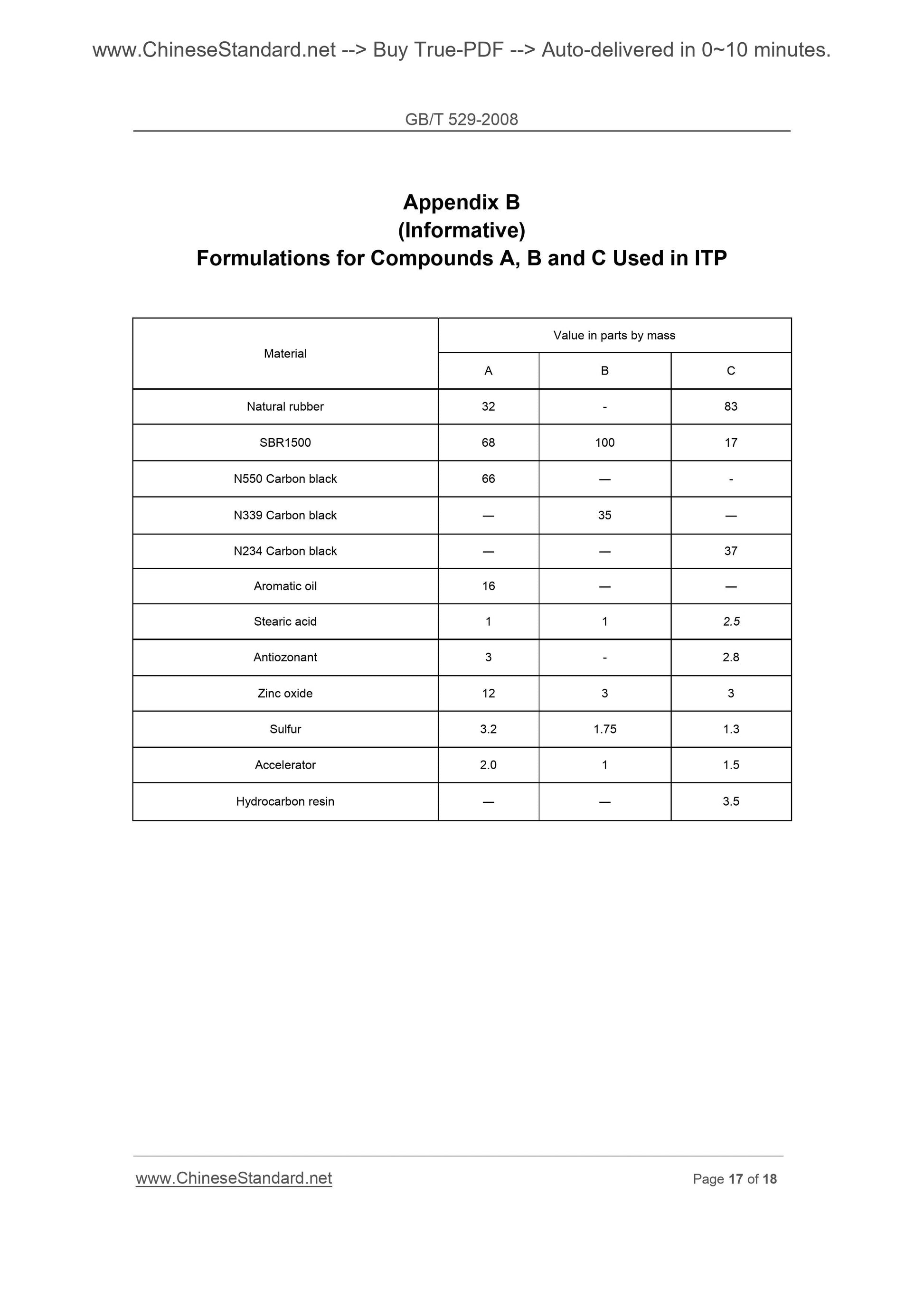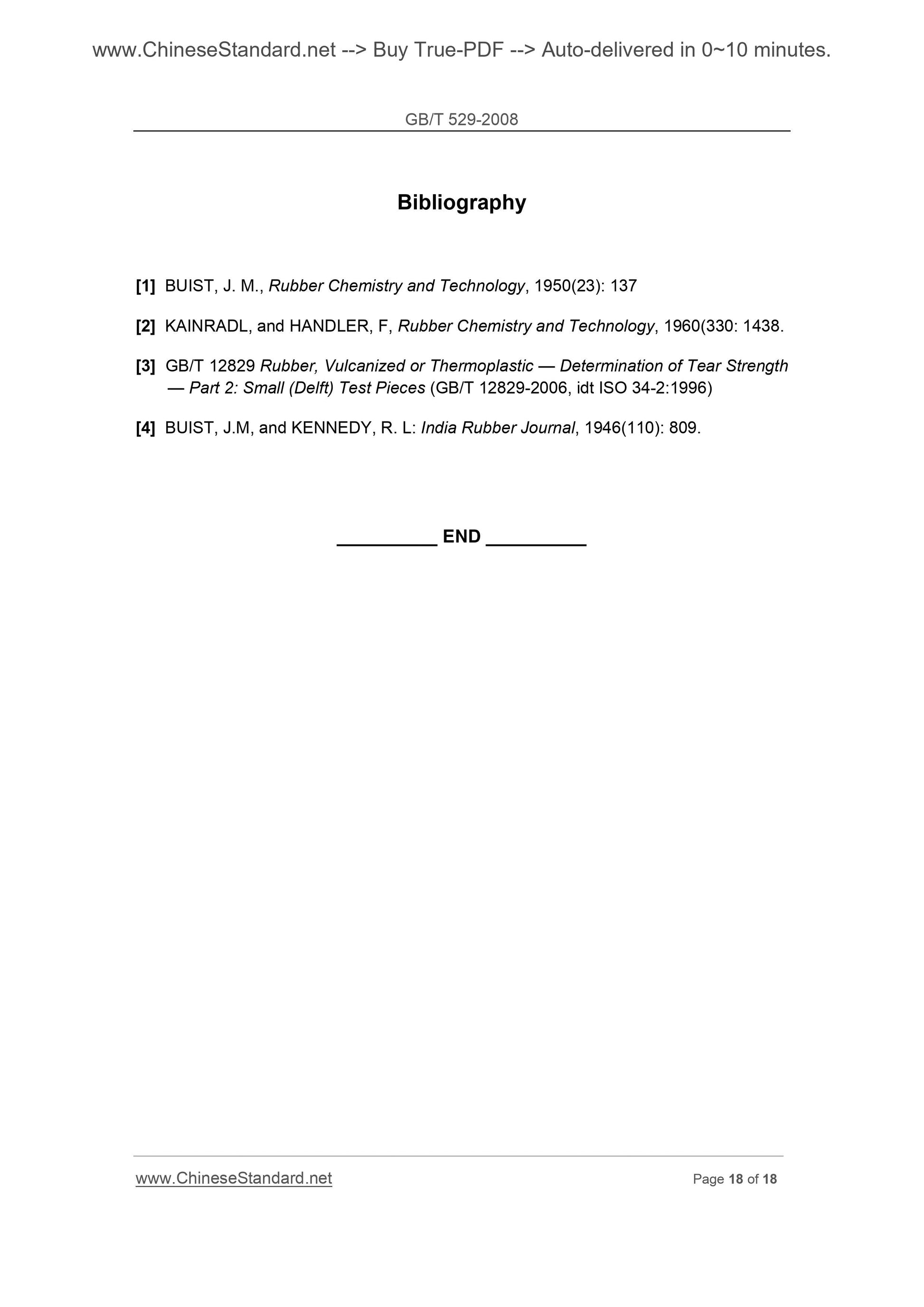1
/
of
11
www.ChineseStandard.us -- Field Test Asia Pte. Ltd.
GB/T 529-2008 English PDF (GB/T529-2008)
GB/T 529-2008 English PDF (GB/T529-2008)
Regular price
$85.00
Regular price
Sale price
$85.00
Unit price
/
per
Shipping calculated at checkout.
Couldn't load pickup availability
GB/T 529-2008: Rubber, vulcanized or thermoplastic -- Determination of tear strength (Trouser, angle and crescent test pieces)
Delivery: 9 seconds. Download (and Email) true-PDF + Invoice.Get Quotation: Click GB/T 529-2008 (Self-service in 1-minute)
Newer / historical versions: GB/T 529-2008
Preview True-PDF
Scope
This Standard specifies three test methods for the determination of the tear strength ofvulcanized and thermoplastic rubber, namely.
— Method A, using a trouser test piece;
— Method B, using an angle test piece, with or without a nick of specified depth;
— Method C, using a crescent test piece with a nick.
The value of tear strength obtained depends on the shape of the test piece, speed of
stretching, temperature of test and calendaring effect of vulcanized rubber.
Method A. Using a trouser test piece
Using the trouser test piece is preferred because it is not sensitive to the length of the
cut, unlike the other two test pieces in which the nick has to be very closely controlled. In
addition, the results obtained are more easily related to the fundamental tear properties
of the material and are less sensitive to modulus effects (provided that the leg extension
is negligible) and the rate of propagation of the tear is directly related to the rate of grip
separation. With some rubbers, the propagation of tear is not smooth (knotty tear), and
analysis of results may be difficult.
Method B, procedure (a). Using an angle test piece without nick
This test is a combination of tear initiation and propagation. Stress is built up at the point
of the angle until it is sufficient to initiate a tear and then further stresses propagate this
tear. However it is only possible to measure the overall force required rupturing the test
piece, and, therefore, the force cannot be resolved in two components producing
initiation and propagation.
Method B, procedure (b). Using an angle test piece with nick
This test measures the force required to propagate a nick already produced in the test
piece. The rate of propagation is not directly related to the jaw speed.
Method C. Using a crescent test piece
This test also measures the force required to propagate a nick already produced in the
test piece and the rate of propagation is not related to the jaw speed.
Note. A method for the determination of the tear strength of small test pieces of rubber (Delft test
pieces) is specified in ISO 34-2.
Basic Data
| Standard ID | GB/T 529-2008 (GB/T529-2008) |
| Description (Translated English) | Rubber, vulcanized or thermoplastic -- Determination of tear strength (Trouser, angle and crescent test pieces) |
| Sector / Industry | National Standard (Recommended) |
| Classification of Chinese Standard | G40 |
| Classification of International Standard | 83.060 |
| Word Count Estimation | 13,169 |
| Date of Issue | 2008-06-04 |
| Date of Implementation | 2008-12-01 |
| Older Standard (superseded by this standard) | GB/T 529-1999 |
| Quoted Standard | GB/T 2941; GB/T 12833; GB/T 14838; ISO 5893 |
| Adopted Standard | ISO 34-1-2004, MOD |
| Regulation (derived from) | National Standard Approval Announcement 2008 No.9 (Total No.122) |
| Issuing agency(ies) | General Administration of Quality Supervision, Inspection and Quarantine of the People's Republic of China, Standardization Administration of the People's Republic of China |
| Summary | This standard specifies test methods for the determination of three vulcanized rubber or thermoplastic rubber tear strength. Namely: Method A: Use Trouser sample, Method B |
Share
